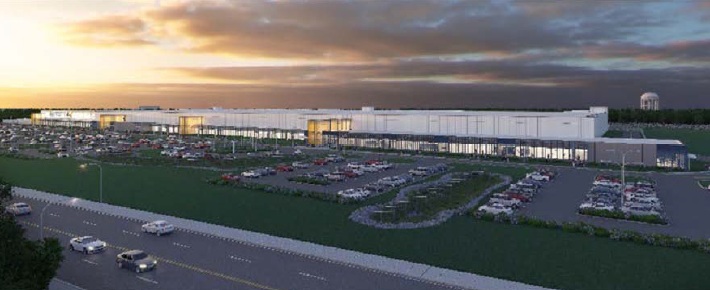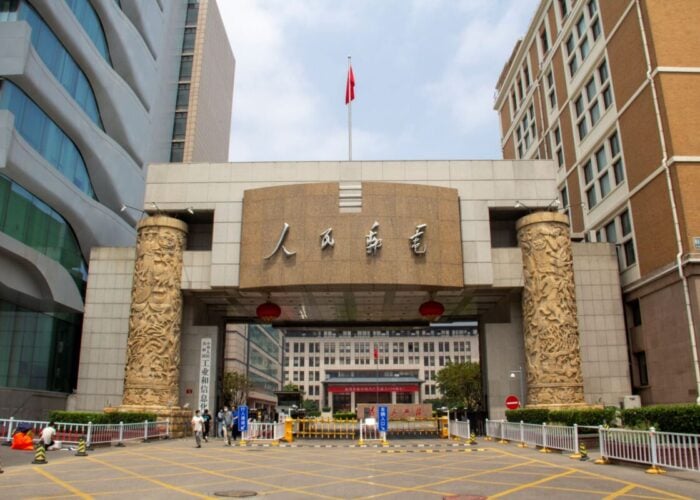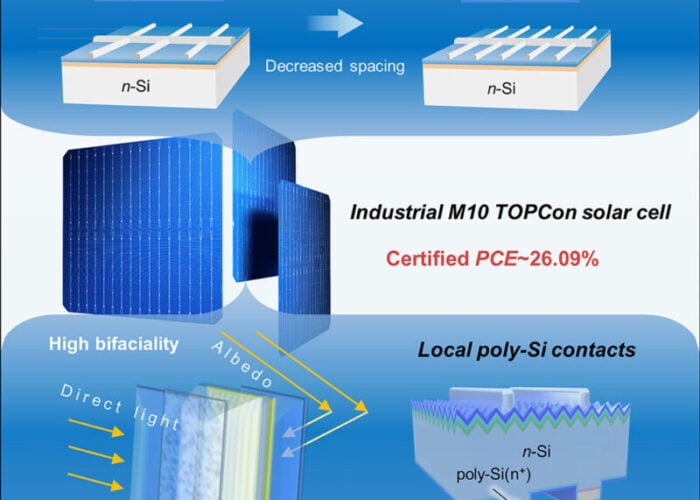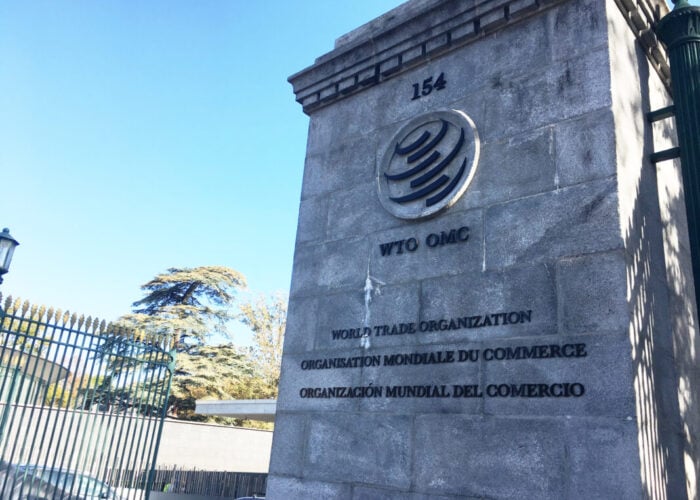
The lack of information in a joint press release from Tesla and Panasonic, confirming a solar cell manufacturing partnership at the SolarCity/Silevo 1GW Buffalo fab in New York State was not a surprise, especially considering it merely rubber stamped an MOU previously announced that was only subject to the successful acquisition by Tesla of SolarCity.
However, what was surprising was the media hype surrounding the release after the partnership was announced December 27, 2016. Concerning, was the lack of any analysis or critical assessment of what was actually being stated. Basically, the press release was purely regurgitated at best and copy and pasted at worst.
Try Premium for just $1
- Full premium access for the first month at only $1
- Converts to an annual rate after 30 days unless cancelled
- Cancel anytime during the trial period
Premium Benefits
- Expert industry analysis and interviews
- Digital access to PV Tech Power journal
- Exclusive event discounts
Or get the full Premium subscription right away
Or continue reading this article for free
SolarCity/Silevo manufacturing known unknowns
A key issue that should have been flagged first but failed to appear in any of the coverage was the fact that the original planned SolarCity/Silevo solar cell and module assembly production ramp of the 1GW plant would seem to have be delayed further.
Primarily, the vague first paragraph gave all that the companies were prepared to state about the manufacturing plans, which for reference is published below:
‘Tesla and Panasonic have finalized an agreement this week to begin the manufacturing of photovoltaic (PV) cells and modules at the Buffalo, NY factory. These high-efficiency PV cells and modules will be used to produce solar panels in the non-solar roof products. When production of the solar roof begins, Tesla will also incorporate Panasonic's cells into the many kinds of solar glass tile roofs that Tesla will be manufacturing. All of these solar products will work seamlessly with Tesla's energy storage products, Powerwall and Powerpack. Production of the first PV modules will begin in summer 2017, and will ramp to 1 Gigawatt of module production by 2019.’
Having read this paragraph countless times, the poor wording and structure seems to have been on purpose and the last part of the last sentence does not seem to relate to Panasonic’s involvement. Instead, this would seem to be a reference to the SolarCity/Silevo part of Buffalo fab.
There have been several push-outs to the timing of the original SolarCity/Silevo tool install phase(s) of the 1GW nameplate cell and module capacity since the facility was first announced back in June 2014.
In the original SolarCity/Silevo plans, construction of the 1GW facility was set for the end of 2015, with construction starting at the end of 2014. Key equipment facilities and manufacturing lines were to be installed starting in the first quarter of 2016 and the initial ramp starting loosely in the summer of 2016.
Later, adjustments were made to the equipment layout plans to further ‘optimise’ manufacturing and also the ramp phase of the cell lines, leading to a reduction in needed module assembly equipment to meet revised initial solar cell capacity ramps.
By mid-2016 it was becoming increasingly clear that little activity in relation to tool install had occurred, although a corruption scandal with the main facility contractor and New York State authorities (direct and indirect) did result in capital allocated to the 1GW fab being delayed and not due to SolarCity/Silevo. The scandal does not directly relate to the Tesla facility.
This may have more importance than many realise as the suspension of funds being allocated to the facility would have been primarily at a time funds would be needed for the solar cell equipment but this aspect remains speculative.
In fact, as activity at the fab seemed to stop, so did any news from SolarCity/Silevo until Tesla announced its planned acquisition of SolarCity and the MOU with Panasonic over a manufacturing partnership.
Putting some of this into perspective, PV Tech was reliably informed in the March to April, 2016 timeframe that the Buffalo fab tool install, qualification and initial ramp looked good for the third quarter and fourth quarter of 2016.
Fast forward to the beginning of the fourth quarter of 2016 and our reliably informed sources were in the dark as much as we were as to the schedules for tool install and initial ramp phases of the plant.
According to the last sentence of the first paragraph from the joint press release, the SolarCity/Silevo side of the Buffalo fab would be ramped completely to the 1GW nameplate capacity by 2019. That is basically two years from now and begs the obvious question – why so long?
Interestingly, Tesla/Panasonic would seem to have not specifically provided any reference to SolarCity/Silevo side of the Buffalo fab ramp in their partnership statement and certainly no mention of when the manufacturing lines of the SolarCity/Silevo side would be installed.
Tesla/Panasonic manufacturing known unknowns
The Tesla/Panasonic statement referenced that the solar roofing tiles previously announced last year would incorporate Panasonic’s HIT (Heterojunction with Intrinsic Thin layer) solar cells that would be produced at the Buffalo fab.
However, the manufacturing partners did not provide any timelines as to when those cells would be used in the tiles, while Tesla never stated at the launch when the tiles would be commercially available.
What can be construed is that Tesla/Panasonic gave the impression that Panasonic’s HIT cells and modules would be in production at the Buffalo fab in the summer of 2017 for deployment in conventional rooftop PV systems by subsidiary SolarCity.
The production of HIT modules at the Buffalo fab in that timeframe also raises some interesting manufacturing issues. Not least is the realisation that two completely different solar cell technologies, using different tool sets will eventually be operating inside the Buffalo fab. Furthermore, three different module assembly lines will be needed to handle Silevo’s 156mm x 156mm cells and module format and Panasonic’s 126mm x 126mm cell and module format and a dedicated format for the SolarCity/Tesla/Panasonic roofing tile.
The use by SolarCity of Panasonic’s modules manufactured at the Buffalo fab may seem as an obvious thing to do. However, SolarCity simply purchases modules from a select number of overseas manufacturers that are provided from non-China locations, due to the anti-dumping duties on cell/modules manufacturer and imported from China. Therefore, Panasonic could have supplied SolarCity with modules made at its plants in Japan and Malaysia.
Another important issue, which was not included in the Tesla/Panasonic statement but was cited by Reuters from a press conference on the partnership by Panasonic in Japan, was that Panasonic would invest US$256 million in the Buffalo fab to produce the cells and modules.
Of course, Tesla/Panasonic did not mention the nameplate capacity of the cells and modules that required the US$256 million capital investment or the timeframe for those investments.
However, Panasonic’s most recent ground-up facility in Malaysia broke ground in December, 2011 and was cited to have cost around US$194 million for a nameplate capacity of 300MW that included N-type wafer, solar cell and module assembly capabilities. Capacity at the Malaysian plant has not been reported by the company to have been expanded since.
Indeed, reports surfaced early last year that Panasonic had suspended production at its Nishikinohama ‘HIT’ solar cell and module assembly plant, due to declining domestic PV module sales. The Nishikinohama plant Ohtsu City, Shiga prefecture started operations in September, 2010 and had a solar cell capacity of 345MW after capacity expansions in 2011.
The point of mentioning all of this is that Panasonic could possibly relocate the production equipment from Kaizuka to Buffalo and spend a fraction on new equipment and significantly shorter lead times on equipment delivery, install, qualification and ramp.
That said Panasonic’s Malaysia fab was cited to have included lessons learnt from HIT production in Japan for lower-cost HIT cell processing. With the expectation that new equipment would be purchased by Panasonic for the Buffalo fab it seems on the surface that the timeline for production ramp (summer, 2017) is very optimistic, considering a typical 9 to 12 month equipment order/build/ship/install/qualification and start of ramp timelines, not least for N-type mono c-Si solar cell equipment, which is primarily at the specialist end of the market.
Although we know that Panasonic will establish HIT cell and module production at Buffalo it remains vague as to tool install timelines and ramp and importantly no information was provided on the nameplate capacities. Our guess for the record is around 400MW for now.
Of course this also raises issues of the overall nameplate capacity at the Buffalo fab. Is the SolarCity/Silevo side still planning to ramp 1GW of cell and module production? Can the facility handle the multiple products?
Buffalo fab recruitment drive known unknowns
Based on the Tesla/Panasonic joint statement it would be reasonable to conclude that only Panasonic would be the manufacturing partner at Buffalo. Indeed, no press coverage suggested any alternative especially that the SolarCity/Silevo side of the plans were still in play.
However, in December, 2016 and importantly ahead of the final Tesla/Panasonic statement and after the original MOU announcement in October, 2016, SolarCity had started posting key senior Buffalo fab manufacturing jobs on its website.
These senior positions clearly and repeatedly highlighted that a key role would be in the migration of the Silevo cell/module technology developed at the pilot line facility in Fremont, California and successfully migrate the technology to the Buffalo fab.
Not surprisingly, timelines for the migration and when the permanent positions located in Buffalo would happen were kept vague but across the board of these senior job postings was the Silevo technology being migrated to Buffalo.
However, also in December, 2016 local Buffalo City news reports surfaced regarding how little momentum was being generated in what local’s thought by then would be a massive recruitment drive by SolarCity for the Buffalo fab. Local recruitment fairs started by SolarCity were claimed to be modest and less than specific on timelines for recruitment let alone training.
That in itself should not be surprising if as we have highlighted there will be two solar cell technologies and three module platforms eventually operating at the facility. Should anything manufacturing from the Tesla/Panasonic statement materialise as stated for the summer of 2017, it would be primarily existing employees from Panasonic’s other production facilities initially involved in the ramp.
Indeed, it seems highly unlikely that Panasonic would operate its HIT line(s) at the Buffalo facility without secure demarcation and Panasonic only employees. However, this remains a known unknown.
Therefore the SolarCity/Silevo side to the Buffalo plant seem at this point in time to follow the Panasonic phase, yet this remains in question.
As we have highlighted there are a lot of known unknowns compared to things we know we know in respect to the Buffalo fab and the parties involved and are looking forward to ticking off the known unknowns as developments unfold.





